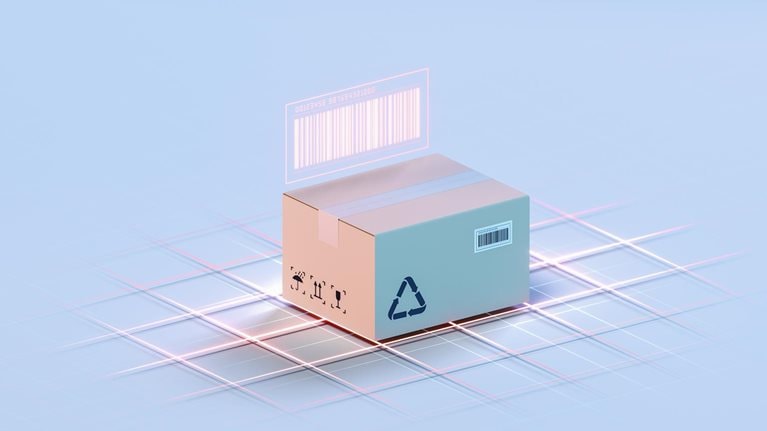What expertise will your next generation of warehouse managers require? Computer programming? Data analytics? Advanced robotics? Maybe all those things and more. If you are like the 71 global companies that responded to a 2021 supply chain survey, you probably accelerated your investments in digital technology as your supply chain grappled with COVID-19 challenges.
What’s more, 99 percent of respondents to that survey said they need more in-house digital supply chain talent to support their current and planned digitization efforts, a tenfold increase on the previous year. That need is driving them to look toward reskilling and redeploying today’s workforce to achieve the required levels of competency (Exhibit 1).

But what is the current state of supply chain capabilities, and what will it take to accelerate them?
In 2017, we published the results of research into the capabilities necessary to run digital supply chains. We found that the majority of companies needed greater numbers of well-rounded professionals who had all the fundamental skills to manage supply chains from end to end. We see this is as a prerequisite for the transition to digitally enabled supply chains, in which skill profiles are redefined with greater emphasis on data and algorithmic literacy, exception-handling competency, and the ability to make sound, integrated business decisions.
Since our last article, we have continued to measure the evolution of supply chain capabilities at hundreds of companies worldwide. Our analysis is based on results from a psychometrician-validated tool that assesses individuals’ knowledge in eight core domains: supply chain strategy, order and demand management, forecasting, inventory management, production planning, supply planning, operational logistics, and performance management. This data set has more than doubled in size since our 2017 article (to more than 15,000 responses), so we thought it timely to revisit our analysis to see what has changed.
Change is happening but too slowly
The headline figures from our most recent analysis look similar to our previous results. Overall, companies’ average supply chain capability scores are still clustered tightly around the 46 percent mark, which is about where they were in 2017. We have seen some movement in specific industries, however. Comparing our sample of companies that have applied the assessment to their workforce, we notice an improvement in the average supply chain capabilities of pharmaceutical organizations, while the average performance of companies in advanced industries (including automotive, aerospace and defense, and semiconductors) and the basic materials sectors (such as metals and mining, oil and gas, and pulp and paper) has fallen slightly (Exhibit 2).

These changes might be driven by shifts in management focus. For example, pharmaceutical companies are paying more attention to supply chain efficiency in response to cost pressure from customers and competitors, and they may aim to improve efficiency through talent acquisition and development. Many advanced industries have faced increased technological disruption in both products and production processes, which may have shifted attention and investment away from further developing people capabilities in supply chain.
As we found the first time around, there is still significant variation in the performance of companies within each sector. Regardless of geographical market or industry, a company controls its own ability to attract, develop, and retain top talent, and this may influence its performance in the long run.
When we look beyond the averages, however, evidence of more movement emerges. In 2017, almost 60 percent of supply chain professionals had an expertise spike only in one area, measured as expert-level achievement in that domain. Today, only 30 percent of people have such a narrow skills profile, while 28 percent have mastered two to five areas. The number of truly well rounded “end-to-end” supply-chain-management experts has been stable at 5 percent of all supply chain roles in the average organization. Capabilities seem to be broadening, although slowly, in line with our expectations that organizations’ capability requirements expand as digital supply chain initiatives grow (Exhibit 3).

In addition to the traditional functional topics, the assessment introduced a new module in 2020 that focuses on digital and advanced analytics applications for supply chain management. This module has been deployed at 25 manufacturers in five industry groups, for a total of nearly 5,000 respondents. The overall average score (40 out of 100) for knowledge of digital topics is somewhat lower than the average score for traditional functional topics, which is 46. But network analytics and demand-planning functions, two of the most frequently implemented digital supply-chain-transformation initiatives, show somewhat higher scores: 46 and 49, respectively. This finding suggests a correlation between higher levels of talent and advances in supply chain processes.
Moreover, despite the argument that digital skills favor the young, the data show that the highest command of applied digital and analytics topics lay with senior executives, followed by midlevel leaders. This hierarchy also exists for traditional supply chain topics. Although more junior employees may have the technical understanding and educational background for digital, they may lack a broad perspective on value creation from applying data science methods and advanced technologies to business problems.
Together, these analyses suggest that most companies face the task of ramping up their supply chain capability-building efforts—across the whole supply chain workforce, not just for their most promising experts. The accelerating pace of automation and digitization is likely to make this all the more urgent in the coming years. According to McKinsey Global Institute research, half of today’s tasks are expected to be automated by 2055, resulting in process transformations and the implicit need to reskill and upskill workers. We’ve known for some time that nearly 70 percent of all transformation programs fail, and a main reason is that employees do not have the necessary skills and capabilities to support the transformation program.
Knowing where to start
The most effective capability-building programs invest in foundational, end-to-end supply chain knowledge building, coupled with advanced functional, technical, and leadership training based on the business’s aspirations and existing capability profiles. But one major challenge often faced by organizations is identifying the specific skills they need to develop and grow competitive people capabilities. In our recent global survey of supply chain executives, we found that only 6 percent of the 71 companies that responded have a formal perspective on their organizations’ strategically important skills and competencies. While most of these organizations said they have a corporate capability-building academy—30 percent of which now include new data and analytics programs—only one in 20 respondents believed that those programs effectively build the skills needed to deliver on strategic aspirations.
Would you like to learn more about our Manufacturing & Supply Chain Practice?
Without a clear road map of either their current capabilities or their future skills needs, supply chain organizations are working in the dark. Many end up relying heavily on external talent pools, using contractors for specialized areas or projects and to fill immediate skill gaps. This practice presents its own risks, however. A manufacturing company in the energy sector, with a strategy that involved contingent workers providing a spike of core capabilities in critical planning and distribution roles, tested its workforce using the standardized assessment. The responses showed that the external talent population had, on average, lower skills than the company’s full-time supply chain employees. These results suggested that the company’s existing selection processes were failing to identify the best talent or to boost the overall functional knowledge of its supply chain group.
An effective capability-building formula
Companies that have a clear perspective of what they need regarding talent still rely on external talent pools to fill urgent capability gaps quickly, but they also take a strategic approach to the development of skills across their existing workforce. The business case is there: organizations that invest in developing their people while launching a transformational change program see a higher success rate than those that do not—by a factor of up to fourfold.
Designing a successful capability-development program is not easy, with most programs failing to produce sustainable results.1 But the experiences of exceptional companies show that successful capability-building programs are typically designed around five elements:
- focusing on the skills that matter, which is often hindered by a lack of understanding of what “good” looks like or what it takes to be “great”
- using diverse and effective learning methods
- incentivizing participation and engagement
- setting up the program to scale beyond the initial pilot
- and driving for impact on company’s operating performance
The formula in action
What does a successful supply chain capability-building program look like? Take the example of a high-tech company that embarked on a large-scale, two-year effort to upgrade the skills of more than 3,000 employees, many of whom had been working in the organization for 20 or 30 years. The company had no systematic capability-building program in place for experienced staff and had made only limited efforts to import external best practices. That organization’s supply chain was underperforming too, with low service levels and significant order backlogs despite high on-hand inventory. As it embarked on a holistic supply chain transformation, the company’s leaders suspected that success would depend on a significant shift in the skills and mindsets of its staff.
Their fears were confirmed by the first step in the development of the new program, in which the company, using assessment-based benchmarking, defined the required core capabilities of its future supply chain and compared those with the skills it had available across its current staff. That work revealed a big gap: the average scores were around 50 percent lower than those seen in the highest-performing organizations.

To improve your supply chain, modernize your supply-chain IT
To close its capability gap, the company designed a learning road map that structured the learning journeys into multiple stages. Initially, it focused on building foundational supply chain knowledge that leveled up skills and established a common language across more than 3,000 members of the supply chain organization. This intervention was delivered via video—allowing broad participation of the supply chain community and adjacent functions, as well as interaction with experienced faculty who could take questions and ensure that participants understood the material.
Next, the company focused on the development of functional expertise for the core group of approximately 1,400 supply chain professionals. This part of the curriculum covered principles for supply chain configuration and basic methods for inventory management, demand forecasting, and balancing of demand and supply through integrated sales and operations planning. Interventions included in-class and online self-paced sessions. The in-class elements were led by expert trainers who could provide context, examples, opportunities for open reflection, and answers to learners’ specific questions. Dedicated online sessions supported the in-person learning with a variety of training formats, including interactive video sessions with expert faculty, content slides, interactive exercises, and quizzes.
Finally, for a selected group of around 100 high-potential participants, the company developed a mastery-level program covering advanced concepts in supply chain management. In addition to classroom and online learning approaches, this part of program incorporated site visits to model warehouses and group discussions. Using a “train the trainer” approach, some expert staff were encouraged to become faculty in the organization’s in-house capability-building academy, helping to develop the supply chain management skills of colleagues and members of adjacent functions.
In line with adult-learning best practices, the entire program placed significant emphasis on experiential learning, giving participants the opportunity to see new skills in action, apply them in practice, and teach them to others. This hands-on experience was delivered in a variety of formats, including interactive case-study sessions, role-playing games, and simulations. This included, for example, the long-established beer game, in which players coordinate a simulated beverage supply chain in the face of inaccurate forecasting, misaligned incentives, a lack of transparency, and poor information sharing. The sight of inventory piling up and the sense of the supply chain running out of control provides an immediate and vivid lesson that is rarely forgotten.
The company measured the impact of its program using a variant of the assessment it used for benchmarking. Participants improved their performance by an average of 20 percentage points over the duration of the program, and the company established a permanent pool of internal trainers, together with a group of change agents and experts in different functions to further disseminate learning, transfer knowledge through practice-sharing communities, and promote continuous skills improvement.
Building a capability accelerator
Developing the capabilities needed to run modern supply chains takes time and commitment, but the job doesn’t end when companies fill their immediate skills requirements. Companies will want to continuously monitor the alignment between their capabilities and their strategic goals, together with the operating performance of the organization. When new gaps become apparent, this continual awareness makes it easier to move rapidly to close them.
These cases illustrate how the most successful supply chains of the future will likely be those that build accelerated capability building into their DNA. These organizations will use mechanisms such as communities of practitioners and in-house supply chain academies to share emerging best practices and deliver training at scale. They will set up their staff incentive systems to encourage continuous personal development, and the message will be reinforced by the involvement of senior leaders, who will act both as program sponsors and role models for the new learning culture.


